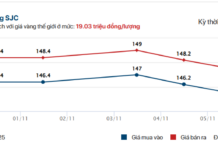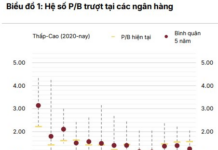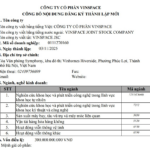
Professor Tran Minh Tuan (center) highlights some notable aspects of the implementation of the Digital Economy Strategy, including the digital economy of industries and fields – Photo: VGP/Nhat Bac
|
Target for e-commerce to account for 10% of total retail revenue by 2025
Speaking at an online seminar on the theme “E-commerce Development – Opportunities, Drivers and Challenges” held on the morning of August 14, Professor Tran Minh Tuan said that the National Strategy for the Development of the Digital Economy and Digital Society by 2025, with a vision to 2030, sets a target for the development of the digital economy by 2025, with the digital economy accounting for about 20% of the country’s GDP. Currently, the digital economy has two main industry sectors.
The ICT-related digital economy involves industrial electronic equipment, semiconductor industry, telecommunications, hardware, and digital content software.
The digital economy of industries and fields: The entire process of digitalization in industries and fields, including e-commerce.
According to the orientation, by 2025, the digital economy of industries and fields will account for a minimum of 50% of the national digital economy. This shows that the role of the digital economy of industries and fields is contributing more and more to the digital economy. In particular, e-commerce has been, is, and will become the main driver for the development of the digital economy of industries and fields.
As of the end of 2023, the e-commerce sector has contributed about 15-17% of the total value of the national digital economy. In addition, the strategy for the development of e-government and digital government has identified that each farmer household and business household can become online stores on e-commerce platforms to enhance their marketing and promotion of their services.
Currently, Vietnam has over 14 million stores and 9,000 markets, but the trend of e-commerce is developing strongly, especially after the COVID-19 phase. Bringing wholesale and retail activities to the digital platform, e-commerce has become a major trend, accounting for 19.6% of total global retail revenue. In Vietnam, the target is for e-commerce revenue to account for 10% of total retail revenue by 2025, and we can achieve this goal.
The space for e-commerce in Vietnam to reach the world average is very open. The Ministry of Information and Communications has closely coordinated with the Ministry of Industry and Trade (directly with the Department of Commerce and Digital Economy) to promote a common program to promote businesses, households, business households, and wholesale and retail stores to digitalize and bring them online.
In addition, the Ministry of Information and Communications coordinates with the Ministries of Agriculture and Rural Development and Industry and Trade to implement programs to bring farmer households and business households online. Currently, on agricultural produce e-commerce platforms, there are about 5.2 million farmer households opening stores on these platforms. Every year, more than 1.1 million business households generate revenue from selling agricultural produce through e-commerce transactions. These are the government’s major orientations in promoting e-commerce as one of the most important drivers for the development of the digital economy in the coming time.
E-commerce creates many jobs and contributes well to the state budget
Also at the seminar, Dr. Vo Tri Thanh emphasized that the digital economy and e-commerce have many stories, which can be academic, but what we see most clearly is that never before has the digital economy, that is, economic activities based on digital technology, together with e-commerce, penetrated into every corner of life, from production and business to consumption as they do now.

Dr. Vo Tri Thanh: The digital economy is penetrating every corner of life, from production and business to consumption.
|
E-commerce has been mentioned for a long time, but Vietnam’s digital economy has only developed in the last 10 years.
If we compare it with GDP, we often mention two numbers. The first number is revenue, but actually, it is not very accurate, and we should talk about the added value that the digital economy and e-commerce create and contribute to GDP.
According to current calculations, the digital economy includes three components. The first is related to the production of ICT equipment, technology related to electronics, information, and communications.
The second group is traditional industries that integrate data and digital technology to create higher added value and develop better.
The third group is associated with innovation, new business areas, typically innovative startups.
The scale of Vietnam’s digital economy accounts for about 13-14% of GDP, while our target is to contribute 20% of GDP by 2025 and 30% of GDP by 2030. This shows that the growth rate of the digital economy’s contribution in terms of added value is much higher than the average growth rate of Vietnam’s GDP.
Behind this are immense potential and opportunities. It is not by chance that we consider digital transformation and the development of the digital economy as a golden opportunity for Vietnam, a latecomer, to catch up and keep up with the times and with other countries.
Talking about e-commerce, which is an essential part of the digital economy. This is the field that best connects the “virtual” with the “real”. Sometimes we look at the virtual world, the digital world as separate from the real world, but the most important thing about the digital economy is to develop GDP.
In terms of direct employment, not to mention the shipper team, we can imagine that Ho Chi Minh City alone has more than 90,000 people doing online business, or about 0.8% of the city’s population. The whole country probably has hundreds of thousands of people doing online business and e-commerce. There is no specific number, but this shows that this field creates a lot of jobs, and if indirect, it may be in the millions.
The contribution to the state budget from the digital economy is also increasing, especially when we have better supervision of e-commerce activities. In 2023 alone, e-commerce revenue was VND 3.5 quadrillion, and budget revenue from this sector was about VND 100,000 billion, and these figures are certainly higher in reality.
In addition to online business, many e-commerce platforms are also part of e-commerce and retail, creating many jobs.
In addition to the attractiveness of Vietnam, with its young population, strong consumption, and preference for online transactions associated with Gen Z, e-commerce creates more equal development, reducing income gaps. E-commerce also develops strongly in rural areas, almost catching up with the city.
I would like to note two points because no pink picture is complete without policies. First, in this development process, the traditional retail sector is gradually narrowing, which is part of the development process but can also create unintended impacts. This is something we need to pay attention to in terms of policies so that no one is left behind.
Second, related to many issues of institutions, dispute handling, and consumer protection, how to develop in a way that brings the best benefits, not always pink. But overall, it must be said that e-commerce has brought about outstanding development and very positive meanings.
Deposit Interest Rate Reaches 40.1% by 2023, MB Holds Top Spot in CASA for 2nd Consecutive Year
Thanks to our pioneering efforts in digital banking, 2023 marks the third consecutive year that MB has attracted over 6 million new customers annually, bringing the total number of customers served to 27 million.











































